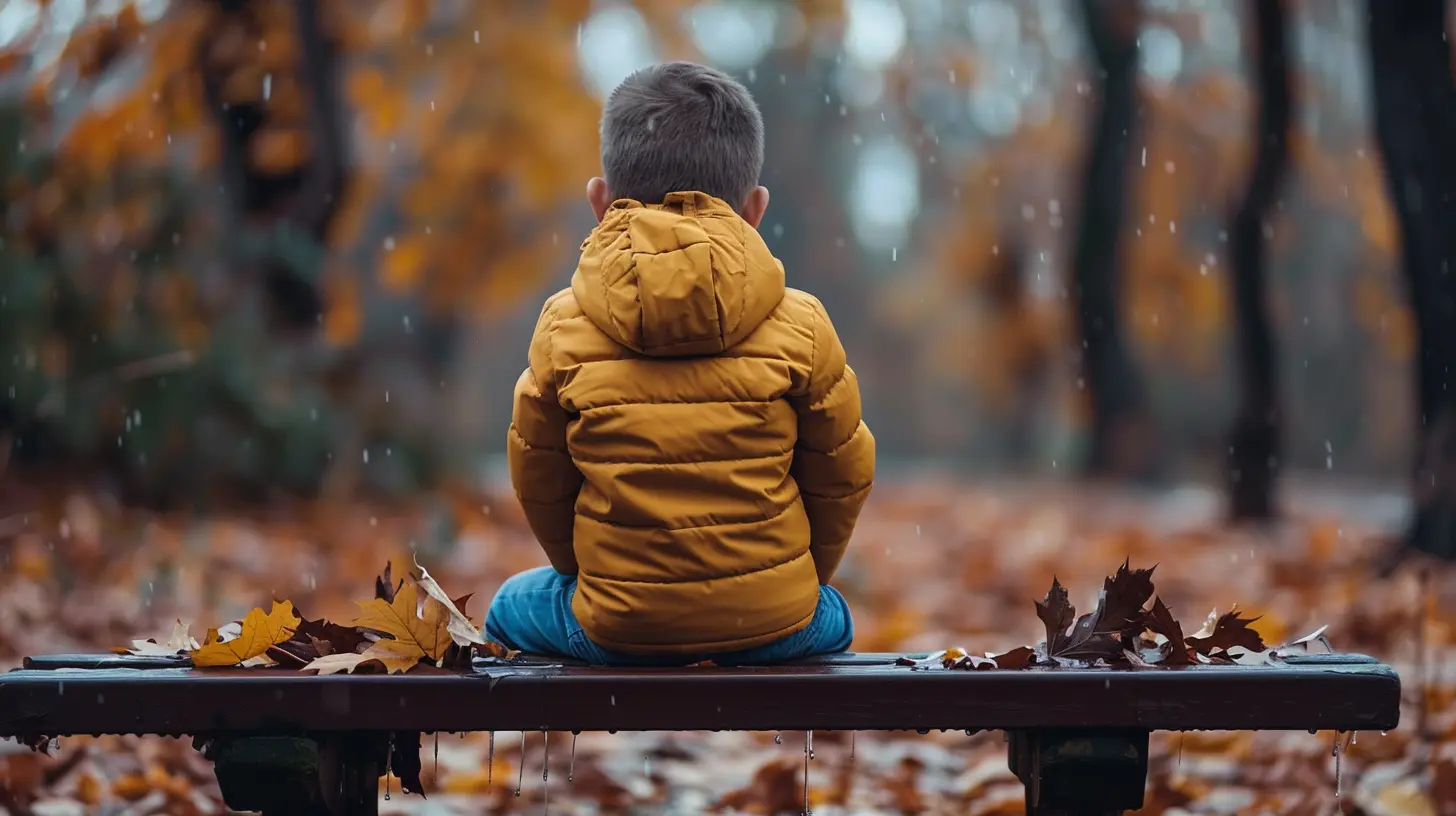Attachment in Adulthood: Why Childhood Still Matters
7 July 2025
Let’s face it—when we think about childhood, we often picture scraped knees, Saturday morning cartoons, or that awkward middle school phase. But here’s the twist: those early years don’t just live in your photo albums. They quietly pack their bags and move in with you into adulthood. Crazy, right?
Whether you're in your twenties navigating your first real relationship or in your forties trying to maintain a healthy marriage, your childhood experiences—especially how you attached to your caregivers—still play a starring role in how you connect with others today.
In this article, we’re diving deep into the emotional roots of adult relationships and how attachment styles formed in childhood continue to shape our world. So pull up a cozy chair, maybe grab a cup of coffee, and let’s get into why your past still whispers into your present.
What Is Attachment, Anyway?
Let’s start with the basics. Attachment is the emotional bond we form with others to feel safe, secure, and understood. Think of it like emotional cement—it sets the foundation for how we connect with people throughout our lives.The whole idea stems from something called Attachment Theory, first introduced by psychologist John Bowlby. According to Bowlby, the bonds we form with our primary caregivers in early childhood (usually a parent) shape the way we respond to intimacy, trust, and emotional closeness later on.
Your first blueprint for love? That came from your parents or guardians.
Meet the Four Attachment Styles
By the time we enter adulthood, most of us fall into one of four attachment styles. Let’s break them down:1. Secure Attachment
You’re cool with closeness, but also comfortable with space. You don’t fear abandonment, and you trust your partner. Basically, emotional Goldilocks—just right.2. Anxious Attachment
Ever feel like you love a little too hard or overthink every text message? You crave closeness but often fear your partner doesn’t feel the same way.3. Avoidant Attachment
You value independence—maybe a little too much. Emotional closeness makes you feel smothered, so you keep people at arm’s length.4. Fearful-Avoidant (or Disorganized) Attachment
You want love, but you fear it too. You swing between needing someone desperately and pushing them away. It’s a tug-of-war in your heart.These styles are not random—they’re rooted in how you were treated and responded to as a child.
The Childhood Connection: Where It All Begins
Here’s where things get real. If your caregivers were consistently loving, responsive, and reliable, you probably developed a secure attachment. But if they were unpredictable, dismissive, or even neglectful? That could shift you toward the anxious or avoidant end of the spectrum.Imagine being a toddler and crying because you're scared. If someone comes in, hugs you, and says, “You’re safe, I’m here,” your brain registers that people can be trusted. But if you’re ignored or punished for showing fear, your brain may say, “Okay, emotions are dangerous, better hide them.”
Childhood is like emotional wet cement—whatever lands in it leaves a lasting impression.
How Attachment Shows Up in Adult Relationships
Ever wonder why you keep falling for emotionally unavailable people? Or why conflict in relationships leaves you spiraling while your partner stays calm and distant?Spoiler alert: It’s probably your attachment style waving a big red flag.
Let’s match the dots:
- Secure adults communicate well, handle conflict maturely, and maintain boundaries.
- Anxiously attached adults seek reassurance constantly, fearing abandonment.
- Avoidantly attached adults shut down during emotional conversations and feel overwhelmed by too much closeness.
- Fearful-avoidant adults experience intense emotional highs and lows and often have a hard time trusting anyone fully.
Knowing your style is like having a relationship map. It doesn't fix everything overnight, but at least you’re not driving blind.
Attachment in Friendships and Work Too?
Yup, you guessed it. Attachment styles don't just hang out in romantic relationships—they’re social butterflies.In friendships, anxious folks might feel left out easily, avoidants might keep people at arm’s length, and secure types build strong, stable bonds.
In the workplace, avoidantly attached individuals may come across as ultra-independent or disconnected. Meanwhile, anxious types might seek excessive approval from their bosses or peers. It's all interconnected.
So yeah, attachment doesn’t clock out at 5 PM. It’s constantly working behind the scenes.
Can Attachment Styles Change?
Here’s the good news—you’re not stuck.Attachment styles are malleable, like emotional clay. Through self-awareness, therapy, and healthy relationships, you can shift toward a more secure style.
Think of it like learning a new language. At first, it’s awkward and uncomfortable, but with practice, you start getting fluent in emotional safety and intimacy.
A few ways to start:
- Talk to a therapist trained in attachment-based therapy.
- Journal your thoughts and triggers in relationships.
- Communicate openly with your partner or close friends.
- Set boundaries and learn to honor your own emotional needs.
Healing your attachment style is like cleaning out a cluttered closet. It might take time, but the peace and freedom that comes after? Totally worth it.
Why This Matters More Than Ever
In today’s digital age, we’re more connected yet lonelier than ever. Social media makes us compare, dating apps keep us swiping, and many people struggle with genuine emotional connection. That’s why understanding your attachment style—especially the roots that trace back to childhood—is more important now than ever.The health of our emotional bonds impacts everything: romantic satisfaction, mental health, even physical well-being (lower stress levels, better immune functioning—seriously).
So if you’ve been wondering why patterns keep repeating in your love life, friendships, or even how you handle arguments—it might be time to look back, not to blame, but to understand.
What Your Inner Child Wants You to Know
Let’s bring it full circle.Your inner child isn’t some abstract idea from a self-help book. It's the part of you that still remembers how it felt to be soothed—or ignored, to be held—or rejected.
And guess what? That part still influences how you love and live.
But here's the empowering part: you're not five years old anymore. You're an adult now, and that means you have the tools to heal, grow, and build the kind of emotional life that feels safe, vibrant, and full of connection.
Start where you are. Talk to someone. Be curious about your patterns. Because when we understand where we come from, we can choose where we’re going.
Quick Tips to Start Healing Your Attachment Wounds
Let’s wrap up with some practical steps you can take today:1. Identify your attachment style. Take a quiz or reflect on your relationship patterns.
2. Practice mindfulness. Learn to sit with emotions instead of reacting impulsively.
3. Talk it out. Therapy is a game-changer.
4. Choose conscious relationships. Surround yourself with people who respect your growth.
5. Be kind to yourself. Healing is not linear. Have patience.
You’re not broken. You’re just human—with a history, a heart, and a chance to change your story.
Final Thoughts
Attachment in adulthood isn’t about blaming your parents or wallowing in past wounds. It’s about understanding the blueprint you were given so you can decide if it’s one you want to keep building from.Childhood does still matter—because it laid the emotional tracks you’re still riding today. But the beautiful part? You’ve always had the power to change direction.
all images in this post were generated using AI tools
Category:
Attachment TheoryAuthor:

Paulina Sanders
Discussion
rate this article
1 comments
Mary McFarlane
Who knew our childhoods were like Wi-Fi? Strong connection needed for a signal in adulthood!
August 1, 2025 at 4:05 AM

Paulina Sanders
Absolutely! Our childhood experiences serve as the foundation for our adult connections, highlighting the importance of strong early relationships for lasting emotional health.


